News
What Does An Lcd Screen Look Like?
What Does An Lcd Screen Look Like?
Content Menu
● The Basic Components of an LCD Screen
>> Backlight
>>> Polarizer
>>> Glass Substrate
>>> Alignment Film
● How LCD Work: From Liquid to Light
>> The Role of Liquid Crystals
>> In-Plane Switching (IPS) LCD
>> Vertical Alignment (VA) LCD
● The Magic Behind the Screen: Decoding the Mystery
● Power Supply and Micro-electronics
● Related Questions and Answers
>> 1. What is the lifespan of an LCD screen?
>> 2. How do I clean an LCD screen safely?
>> 3. What are the advantages of LED backlighting over CCFL?
>> 4. Can LCD screen be recycled?
>> 5. What is the difference between LCD and OLED screen?
Introduction
In the digital era, Liquid Crystal Display (LCD) screen have become ubiquitous, integral to our daily lives through smartphones, laptops, televisions, and digital signage. These screens present crisp images and vibrant colors, but few understand the complex technology enabling their functionality. This article explores the inner workings of LCD screen, from their fundamental components to the science behind pixel formation and color filtering. We will also cover the different types of LCD screen available today and their unique features.

The Basic Components of an LCD Screen
At the heart of every LCD screen, three primary components work in harmony to create the images we see.
Backlight
The backlight provides the necessary light source for the display. Without it, the liquid crystal layer would be unable to manipulate light to create images. Backlights are typically white and can be produced using Cold Cathode Fluorescent Lamps (CCFL) or Light Emitting Diodes (LED). LED are increasingly favored due to their energy efficiency and environmental benefits[9]. The light from the backlight passes through several layers, including diffusers and reflectors, to ensure even distribution across the screen. Diffusers spread the light, while reflectors redirect otherwise wasted light back towards the LCD panel, enhancing the display efficiency.
Liquid Crystal Layer
The liquid crystal layer consists of tiny cells filled with liquid crystals, sandwiched between two polarizing filters. These crystals change their orientation when an electric current is applied, manipulating the light from the backlight to create images. The liquid crystals are responsive to electrical signals, altering their alignment and controlling the amount of light that passes through.
Color Filters
Color filters add color to the images created by the liquid crystal layer. Each pixel on an LCD screen comprises three sub-pixels: one with a red filter, one with a green filter, and one with a blue filter. By controlling the intensity of light passing through each sub-pixel, the screen can produce a wide range of colors.
Additional Components
Polarizer
LCD panels consist of a polarizer, glass substrate, color filter, alignment film, liquid crystal material, and optical diaphragm. The polarizer is crucial for the panel's ability to dim pixels.
Glass Substrate
The panels have flutes that direct the crystals, giving them a distinctive orientation.
Alignment Film
The electrode layers are coated with a thin aligning layer of a polymer that causes the liquid crystal molecules in contact with them to align approximately parallel to the surface.
Optical Diaphragm
Together, all the components function to create the images seen on the LCD screen.

How LCDs Work: From Liquid to Light
LCD use liquid crystals between two transparent electrodes to display images. When an electric current is applied, the liquid crystals move to control the amount of light passing through, creating the pictures on the screen.
Polarized Light
LCD screen rely on the polarization of light. Light travels in a specific direction and can be rotated, a phenomenon known as polarization. LCD use polarizing filters that only allow light through if it is angled or polarized at a certain angle.
The Role of Liquid Crystals
Liquid crystals have the property of bending light. In an LCD display, light from the backlight hits the first polarizing filter, passes through the liquid crystals where the light is bent, and then goes through the second polarizing filter. The amount of voltage applied to the liquid crystals controls how much light is bent and, consequently, how much light is blocked by the second polarizing filter.
Pixel Formation
Each pixel on an LCD screen is made up of three sub-pixels: red, green, and blue. These sub-pixels are controlled by a matrix of thin-film transistors (TFT). TFT LCD modules ensure each liquid crystal pixel is driven by a thin film transistor, allowing for high speed, brightness, and contrast. The high density of these sub-pixels makes it impossible for the naked eye to distinguish them individually, allowing their colors to blend and create millions of different colors.
Types of LCD Screen
Twisted Nematic (TN) LCD
TN LCD are known for their fast response times and are commonly used in gaming monitors. However, they often have narrower viewing angles and lower color accuracy compared to other types.
In-Plane Switching (IPS) LCD
IPS LCD offer wider viewing angles and better color accuracy, making them suitable for graphic design and professional applications. They typically have slower response times than TN panels but provide a superior visual experience.
Vertical Alignment (VA) LCD
VA LCD provide high contrast ratios and good viewing angles, falling between TN and IPS panels in terms of performance. They are often used in televisions and monitors where a balance of image quality and response time is desired.
The Magic Behind the Screen: Decoding the Mystery
LCD technology has evolved significantly, with LCD screen now displaying crisp images, bright colors, and vivid details. This transformation is due to the liquid crystals that respond to electrical signals and change alignment when an electric current is applied. This change affects the amount of light passing through, creating the images we see.
Power Supply and Micro-electronics
An LCD display requires specific voltages, often necessitating a power converter. The main voltage is converted to an intermediate DC voltage, typically between 12 and 24V. This power is then divided between the backlight and the microelectronics. The micro-electronics handle signal processing and consist of a video signal receiver and a panel driver.
Conclusion
LCD screen have revolutionized how we view the world, thanks to their capacity to produce vibrant, clear visuals. These displays rely on a combination of carefully orchestrated components, including backlights, liquid crystals, and color filters, to create images. Whether it's the fast response times of TN panels or the wide viewing angles of IPS displays, LCD technology continues to evolve, providing solutions adapted to a wide array of applications. Understanding the fundamental principles behind LCD screens enriches our appreciation of the technology that is now an indispensable part of modern life.

Related Questions and Answers
1. What is the lifespan of an LCD screen?
The lifespan of an LCD screen typically ranges from 30,000 to 60,000 hours. This can be affected by usage patterns, brightness settings, and environmental conditions.
2. How do I clean an LCD screen safely?
To clean an LCD screen, use a soft, lint-free cloth and avoid applying excessive pressure. If necessary, use a specialized LCD cleaning solution. Never spray liquid directly onto the screen.
3. What are the advantages of LED backlighting over CCFL?
LED backlighting offers several advantages over CCFL, including lower energy consumption, longer lifespan, and better color reproduction. LED are also more environmentally friendly, as they do not contain mercury.
4. Can LCD screens be recycled?
Yes, LCD screen can be recycled, but it is important to do so properly. Many recycling centers accept LCD screen and will dismantle them to recover valuable materials. Check with local recycling facilities for specific guidelines.
5. What is the difference between LCD and OLED screen?
LCD (Liquid Crystal Display) and OLED (Organic Light Emitting Diode) screen differ in their fundamental technology. LCD use a backlight to illuminate liquid crystals, while OLED emit light directly from each pixel. OLED typically offer better contrast, deeper blacks, and wider viewing angles than LCD.
For more details or inquiries, feel free to contact us directly at: sales@szdingtouch.com.
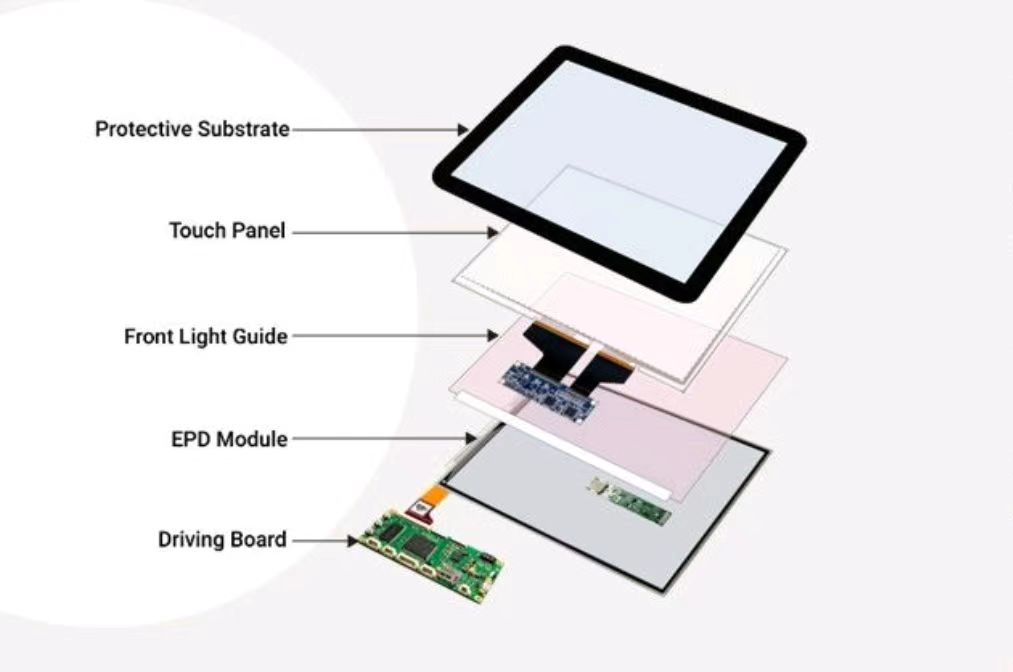
DINGTouch: Committed to continuous innovation and improvement of product quality to meet customers' high requirements and expectations.
DINGTouch is a manufacturer that provides high quality touch screen panels. Focus on the design, manufacturing and sales of touch screen panels, and are committed to providing customized solutions that satisfy customers.
DINGTouch: In the process of customizing touch screen panels, we focus on close cooperation and communication with customers. Understanding customers' needs and providing customized solutions will meet customers' individual needs. The company's products are favored by customers for their high quality and reliability, and provide them with the best touchscreen panel solutions.
At DINGTOUCH, we are the world's leading touchscreen manufacturer, helping businesses around the world take advantage of this exciting technology. For more information, please visit the home page now.
Find the DINGTouch technical team to achieve the success of your company's new project.
How to choose touch screen customization?
DINGTouch is a company specializing in the R&D and production of touch screen technology, headquartered in Shenzhen, China. As a professional touch screen supplier, DINGTouch is committed to providing high-quality, stable and reliable touch screen products to meet the diverse needs of customers. We continue to carry out technological innovation and product optimization to ensure that its touch screen products have good sensitivity, accuracy and durability.
In addition to the products themselves, we also focus on cooperation and communication with customers, and are committed to providing customized solutions and excellent after-sales services. Through continuous efforts to improve product quality and customer satisfaction, we have established a good reputation in the touchscreen industry and won widespread market recognition.

What DINGTOUCH can do:
• PCAP maximum size 65”
• Multi-touch (Touch screen can be customized to your needs.)
• Optical bonding service/air bonding
• LCD interface: HDMI/RGB/MIPI/LVDS/EDP, etc.
• PCAP interface: IIC/USB interface
• CTP can customize the cover glass surface treatment process AG (anti-glare), AR (anti-reflection), AF (anti-fingerprint), waterproof, and glove touch
• Supports 0.55 mm-12 mm coverslip touch.
• Support operating temperature: -40℃-90℃.
Dingtouch Industrial Capacitive Touch Screen Manufacturer
In conclusion, Dingtouch as a professional touch screen manufacturer with more than 10 years touch screen experience.We have many capacitive touch screen. Such as5 inch touch screen,7 inch touch screen,10.1inch touch screen,15 inch touch screen,15.6 inch touch screen,17 inch touch screen,18.5 inch touch screen,19 inch touch screen,21.5 inch touch screen,32 inch touch screen, However, we also welcome to customize your own touch screen . Contact our team today to learn what capacitive touch screen are best for our retail business needs.
Contact us NOW! sales@szdingtouch.com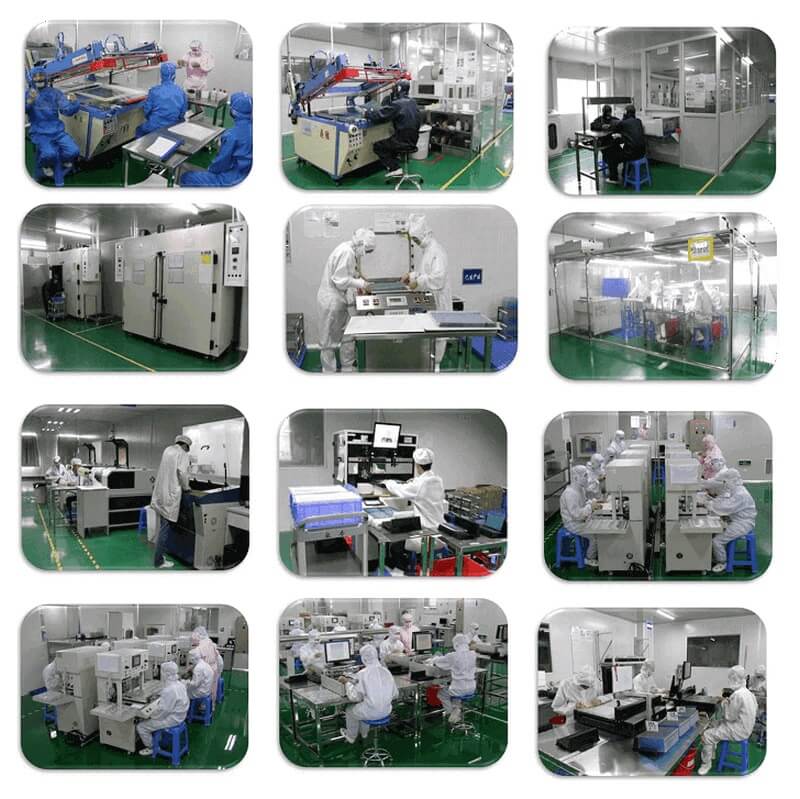
DINGTouch: Committed to continuous innovation and improvement of product quality to meet customers' high requirements and expectations.
DINGTouch is a manufacturer that provides high quality touch screen panels. Focus on the design, manufacturing and sales of touch screen panels, and are committed to providing customized solutions that satisfy customers.
DINGTouch: In the process of customizing touch screen panels, we focus on close cooperation and communication with customers. Understanding customers' needs and providing customized solutions will meet customers' individual needs. The company's products are favored by customers for their high quality and reliability, and provide them with the best touchscreen panel solutions.
At DINGTOUCH, we are the world's leading touchscreen manufacturer, helping businesses around the world take advantage of this exciting technology. For more information, please visit the home page now.
Find the DINGTouch technical team to achieve the success of your company's new project.
How to choose touch screen customization?
DINGTouch is a company specializing in the R&D and production of touch screen technology, headquartered in Shenzhen, China. As a professional touch screen supplier, DINGTouch is committed to providing high-quality, stable and reliable touch screen products to meet the diverse needs of customers. We continue to carry out technological innovation and product optimization to ensure that its touch screen products have good sensitivity, accuracy and durability.
In addition to the products themselves, we also focus on cooperation and communication with customers, and are committed to providing customized solutions and excellent after-sales services. Through continuous efforts to improve product quality and customer satisfaction, we have established a good reputation in the touchscreen industry and won widespread market recognition.
What DINGTOUCH can do:
• PCAP maximum size 65”
• Multi-touch (Touch screen can be customized to your needs.)
• Optical bonding service/air bonding
• LCD interface: HDMI/RGB/MIPI/LVDS/EDP, etc.
• PCAP interface: IIC/USB interface
• CTP can customize the cover glass surface treatment process AG (anti-glare), AR (anti-reflection), AF (anti-fingerprint), waterproof, and glove touch
• Supports 0.55 mm-12 mm coverslip touch.
• Support operating temperature: -40℃-90℃.
Dingtouch Industrial Capacitive Touch Screen Manufacturer
In conclusion, Dingtouch as a professional touch screen manufacturer with more than 10 years touch screen experience.We have many capacitive touch screen. Such as5 inch touch screen,7 inch touch screen,10.1inch touch screen,15 inch touch screen,15.6 inch touch screen,17 inch touch screen,18.5 inch touch screen,19 inch touch screen,21.5 inch touch screen,32 inch touch screen, However, we also welcome to customize your own touch screen . Contact our team today to learn what capacitive touch screen are best for our retail business needs.
Contact us NOW! sales@szdingtouch.com
CATEGORIES
CONTACT US
Contact: Dingtouch
Phone: +8615815536116
Tel: +8615815536116
Email: sales@szdingtouch.com
Add: Building A, Bailu Plaza, No. 48, Gonghe Industrial Road, Gongle Community, Xixiang Street, Baoan District, Shenzhen,China. 518126

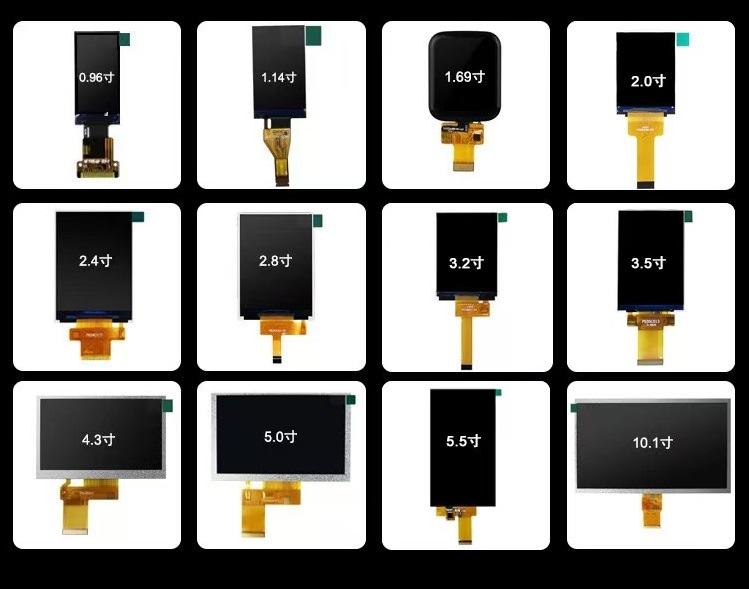
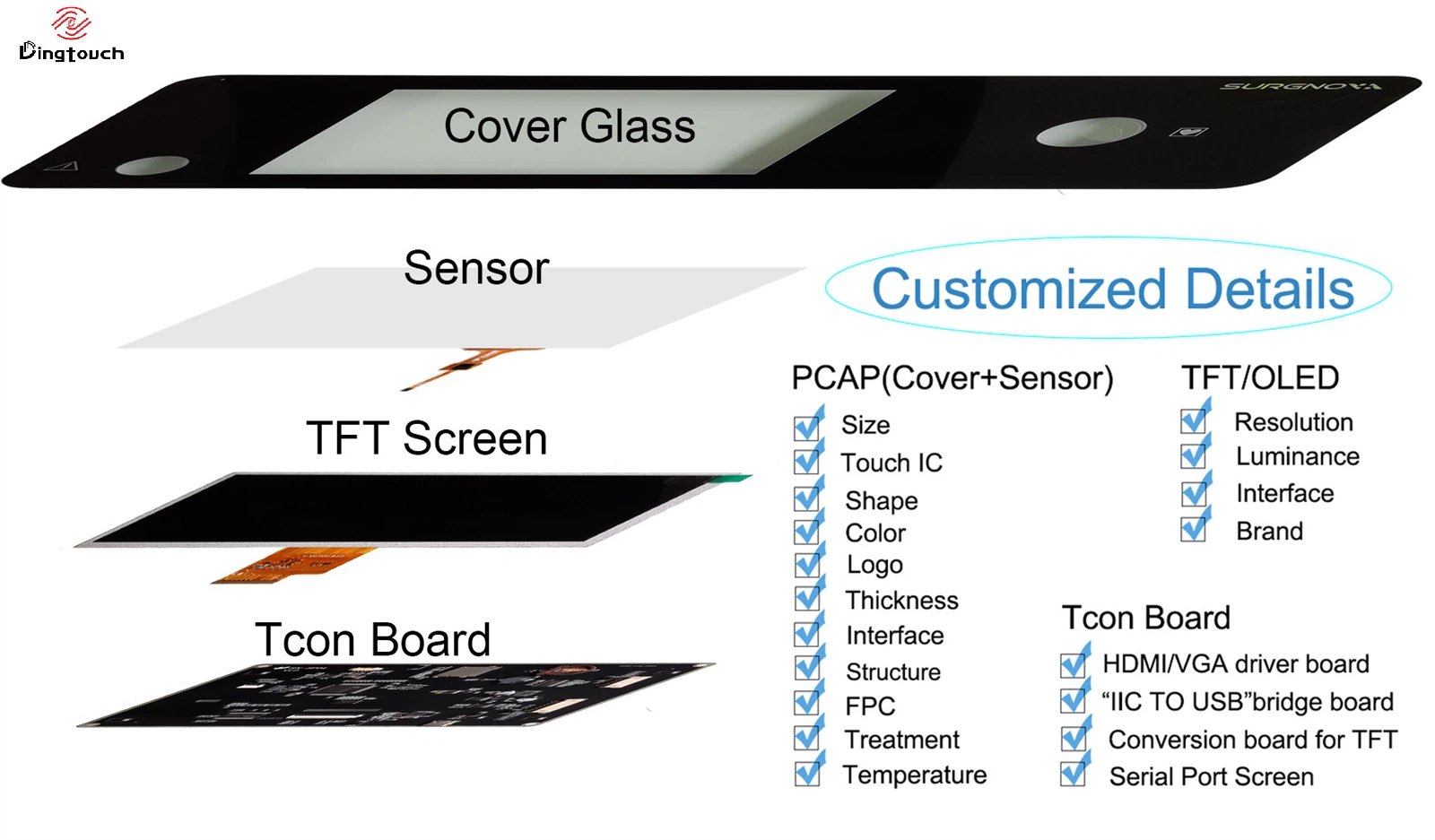

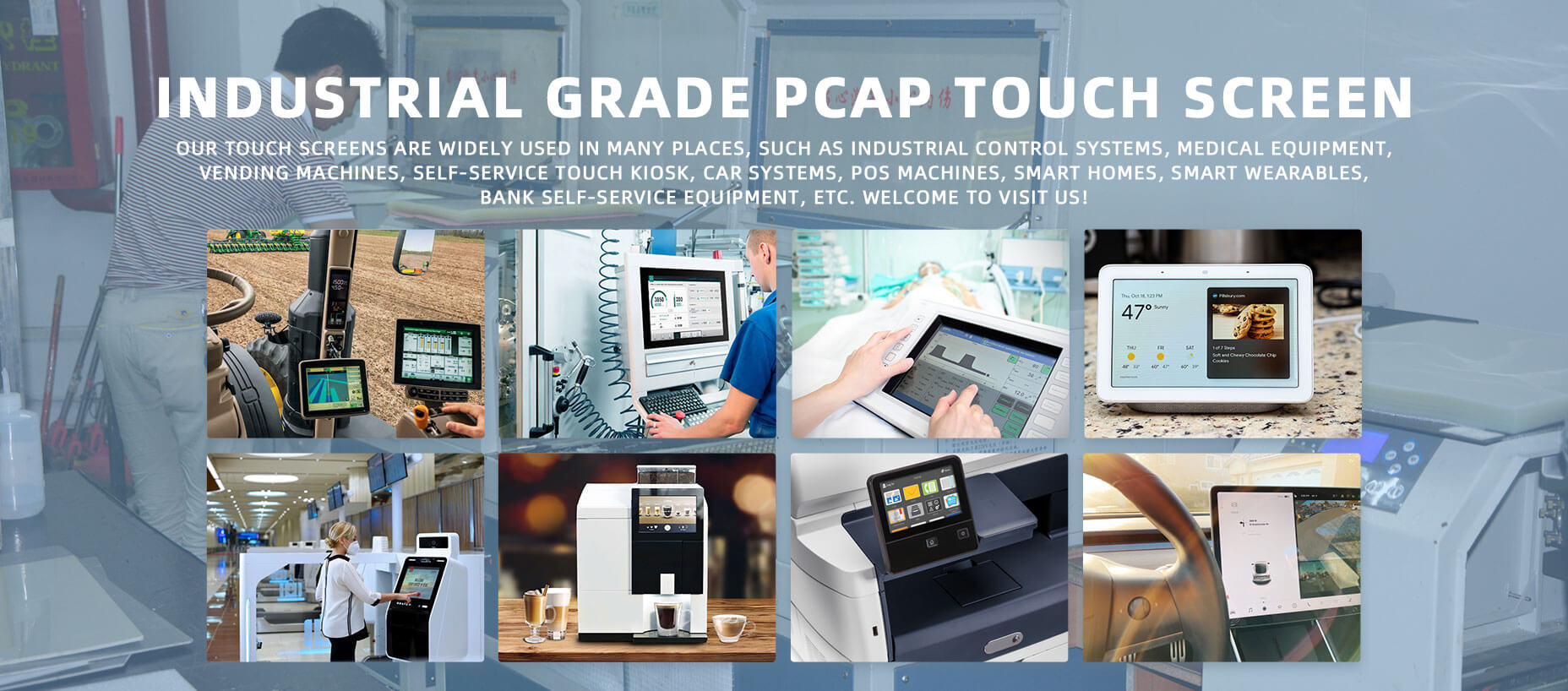
 Dingtouch
Dingtouch